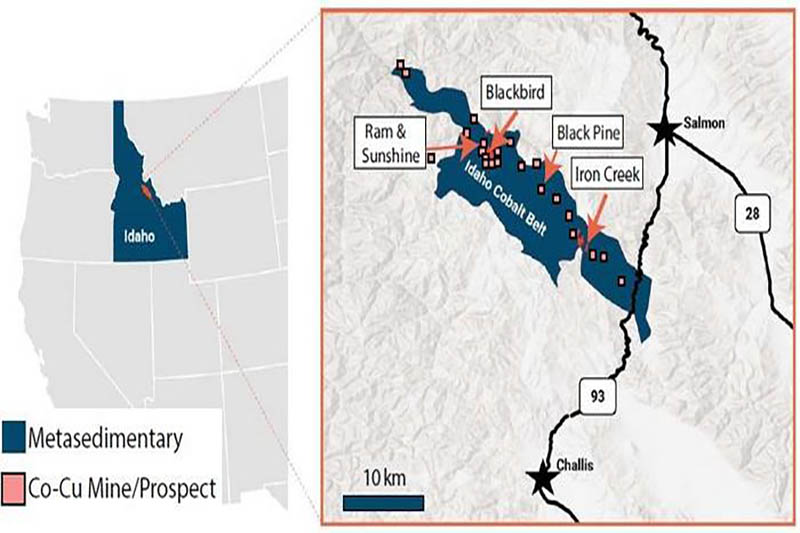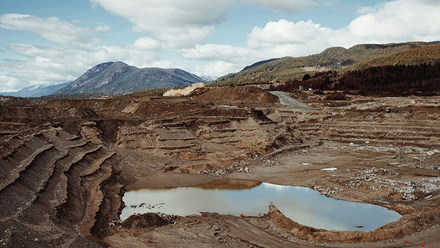New study evaluates potential of Idaho Cobalt Belt
A paper from researchers at Colorado School of Mines, USA looks at the cobalt mineralogy at the Iron Creek deposit in the Idaho cobalt belt (ICB).

ICB hosts the second largest known domestic resource of cobalt
© Iron Creek deposit location, Idaho cobalt belt (Electra Battery Materials, 2022) (CC BY-NC)The study comes against the backdop of the Biden administration's Defense Production Act, with hopes that the US will increase its domestic production and processing of critical minerals. The authors note the current supply chain depends on upstream extraction in the Democratic Republic of the Congo and midstream processing in China.
The ICB is the second largest domestic resource of cobalt for the US, and it is estimated that the Iron Creek site could hold over 6,000t.
Understanding the mineralogy of the Iron Creek deposit is core to evaluating the amount of cobalt and other critical minerals that could be extracted from the site, and what methods are best for processing the ore.
The study reveals that the cobalt is mainly found in the natural deposit of cobaltiferous pyrite but also in the forms of cobaltiferous arsenopyrite and cobaltite, with lesser deposits of tellurium, silver, bismuth and copper.
The authors suggest that the copper and cobalt should be divided and processed separately, with copper being smelted on home soil and cobalt either in Canada or in a newly built site in the US.
But despite renewed interest in domestic mining, the US currently lacks the facilities needed to process the ore from the ICB into usable cobalt.
Elizabeth Holley, Associate Professor of Mining Engineering at the Colorado School of Mines, explains, 'If indeed the US is interested in domestic supply chains for mining and processing of critical minerals, we don't have the infrastructure in the United States to process the cobalt that would come from the Idaho Cobalt Belt.'
The deposit is over one billion years old and has been mined intermittently in the 1900s for lead, zinc, silver, copper, cobalt and gold. The mine has been used as recently as 2022 by Jervois, Australia, and Electra Battery Materials, Canada, are currently exploring the Iron Creek deposit.
The Open Access paper can be found here.







